By Peter Hossli (text) und Robert Huber (photos)
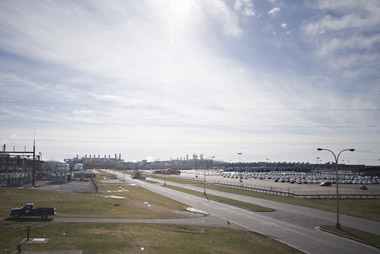
“They collectively solved the problem”, says Hendrichs, who has been working on this production line for 18 years. The lift is in working order again. “We call that kaizen: always improving.”
Kaizen is a Japanese philosophy, but in the middle of the US state of Kentucky, in the peaceful city of Georgetown, the American shift-workers swear by Japanese wisdom. Here, in the backwoods, Toyota Motor Corporation operates its biggest automotive factory outside Japan. Americans make care here that are sold locally to earn sizable profits for the mother company.
Toyota USA is the antithesis of the crisis-stricken US motor industry. General Motors (GM) and Ford are suffering record losses – last year, the two manufacturers announced planes to close a combined 28 plants and other facilities in the North America. Meanwhile, the Japanese firm has risen to the top of the industry, this year becoming the world’s largest producer of cars.
Toyota does not only appeal to the US consumer, it has also taught Americans how to better make cars, having had a factory in Georgetown for 20 years. The factory is the largest building in the US in terms of hectares covered.
Toyota has invested more than US$ 5 billion in the wholly owned white, windowless factory in the city’s northeastern suburbs. Seven thousand workers, or team members, as they are know, work in shifts to make 500’000 cars a year, most of which are Camrys, the best-selling car in the US.
“It’s an American car”, stresses Hendrichs. “Eighty per cent of the parts are made in America”. He denies selling out his homeland and insists, “Driving Toyota is patriotic.”
Georgetown thinks like Hendrichs. The city – twinned with Tahara, a production center of Toyota’s Lexus, near Nagoya – is thankful to the Japanese for an unparalleled boom. Ten local factories rely on Toyota for their business. The city’s population has swelled from 8’000 before Toyota arrived to almost 25’000. At least once a year a new school opens, and the kindergartens and college are overflowing. The number of beds in the hospital has quadrupled.
While historic downtowns crumble throughout the United States, renovated buildings have breathed new life into Georgetown’s main street. One the outskirts, condominiums and houses at the foot of lush hills are being occupied as quickly as they are built. Golf courses and swimming pools are sprouting everywhere.
Georgetown, around which man legends concerning the birth of bourbon whiskey swirl, had alcohol prohibition until young families associated with Toyota urged an end to it, in 2000. Although there are still no liquor stores, alcohol may be consumed in restaurants, but only with a meal.
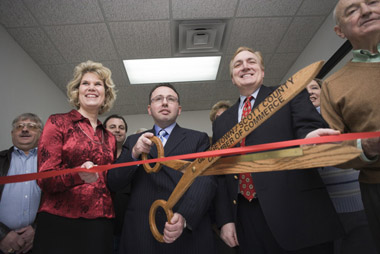
Tingle-Sames is, not surprisingly, a fan of the Japanese. She knows that without Toyota, the City’s regeneration would not have been possible. The tall blond with a winning laugh, who took over the reins at the beginning of the year, grew up in Georgetown.
“We have the most modern water supply system and best streets in all of Kentucky” she says. “Thanks to Toyota.”
The carmaker is responsible for two-thirds of Georgetown’s income-tax revenue. The company contributes well 90 percent of the local business tax. “We pray to God that does not change”, says Tinge-Sames.
She does not leave it to God, though. The mayor regularly drives to the factory to, as she says, “ask what needs Toyota currently has”. On her first visit, she remembers, she was given a copy of The Toyota Way, a book that outlines the methods used by the Japanese manufacturer. She read it and was impressed. “I am currently changing the city government to follow the Toyota principles.”
Tingle-Sames and her Republican leadership believe Toyota’s reliance on team members improving the company and saving money holds the key to the manufacturer’s success. They consider the crisis at GM and Ford attributable to a lack of such an expectation at those firms. Crucially, believes the mayor, “Toyota is successful while it has no union.”
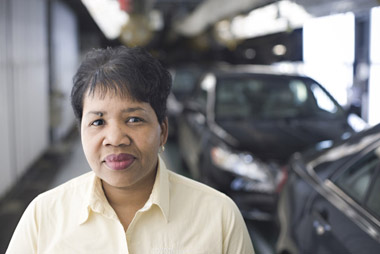
And, she adds, “we know every process of production.” Workers at Ford and GM factories normally work in the same spot all day long, whereas Toyota allows two or three rotations daily. This adaptability means that factory can be converted to produce a different model of car within days, an operation the American manufacturers need weeks to complete.
Large rolls of thin steel are stored on immaculate linoleum. A forklift raises them to the cutting machine, out of which come small pieces of punched metal. About 20 hours after a worker first lays his or her hands on a piece of steel, that metal rolls into the parking lot in form of a char that a team member will then drive onto a waiting truck.
Hanging from the ceiling in the spotless factory is a black box. That shows a real-time number of how many cars the current shift has to build – 536 – and how many have been completed: 459. The box also displays the productivity rate: 97.7 per cent. A computer calculates how much overtime, if any, is needed to complete the job.
“Everyone knows that the blame is ours [if the job runs over time]”, says Hendrichs, who was a cook in the army before joining Toyota. He brings the perfect work experience according the manufacturer. The company does not like to hire workers who have previously built cars because it’s easier to novices the Toyota Way from scratch.
“We’re students”, says general manager Tom Zawacki, one of the few here who does what it’s like to work for an American car company. “Forget all that you know”, the Japanese demanded of the former GM foreman when he come over to run the opposition’s facility 20 years ago, and he hasn’t rested on his laurels since.
The factory is rules by “healthy paranoia”, – quality must constantly be improved and safety and output must by increased – says Zawacki, a large, happy man with thinning grey hair. To obtain awareness, he says, team members must constantly want to better themselves.
A culture that believes “if it’s running well, it must get better” does not sit well with the average American factory worker. “We Americans overly celebrate success,” says Zawacki. “At Toyota, the focus lies on the negative.” And anyone who manages to negate a negative earns extra money.
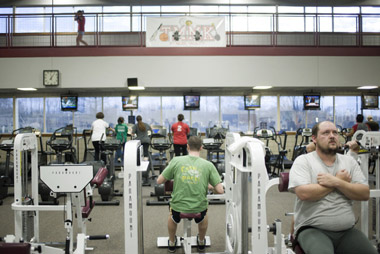
Of course, all the management theories and worker’s amenities in the world would not make Toyota successful if its products were not popular. Every car that rolls off the assembly line in Georgetown does so as an already sold unit. Ford and GM on the other hand sit on tens of thousands of unsold cars while Toyota must import to keep up with high demand. The company is constantly looking for sites in the US on which to build more factories.
Under a sky full of deep grey clouds, dozens of sport-utility vehicles and as many Camry Hybrids line up in formation at Green’s Toyota car dealership, in Lexington, 20 minutes’ drive south of Georgetown. “Last year I broke all the records”, says Lance Royalty, head salesman at the largest Toyota dealership in the region. The turnover of the brand’s dealerships in the US rose 25 percent last year; that of Green’s rose 50 per cent. A quarter of the customers in Lexington are Toyota employees, who receive a discount, says Royalty.
On the Toyota-dominated streets of Georgetown, the cars are known for their longevity. “My truck is 11 years old. I could buy myself a new car”, says Zawacki, but he intends to wait for at least nine years, so he can brag about having had the same vehicle for 20 years.
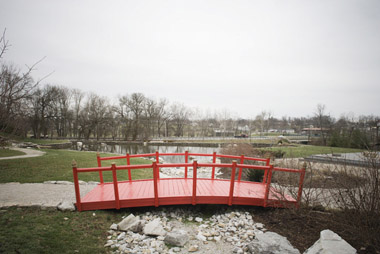
Toyota has striven to be as American as possible and in Georgetown, only 5 per cent of the employees are Japanese. Advertising campaigns have shown the care in identifiable US landscapes. At the factory entrance flutters the Stars and Stripes. When team members are called up to serve in the US military, Toyota holds their job open for them.
The only nod to Japanese culture is the garish kimono that hangs behind glass in the city hall, few people use the Japanese garden planed by Toyota. There is no sushi Restaurant in town, where the most popular eatery is Fava, which serves hamburgers, French Fries, sandwiches an apple pies. Jeni Gruchow, a bespectacled woman who is standing behind the cash register counting money, says she could fill twice as many tables as she does. She benefits if someone in the Toyota family suffers an accident of has a child: the company orders food for everyone.
Eddie Wynn, a 40-year-old leader of a Toyota team of nine, stands in front of a magnificent house with five bedrooms. In the garage are two Harley-Davidson motorcycles and a liver eight-cylinder Toyota truck. Thanks to the Japanese company, he is living the American dream. As a teenager, Wynn risked his life in the damp, cold coals mines of Eastern Kentucky. “It was dirty and dangerous”, says Wynn. “Every four month job, now job security is not an issue.”
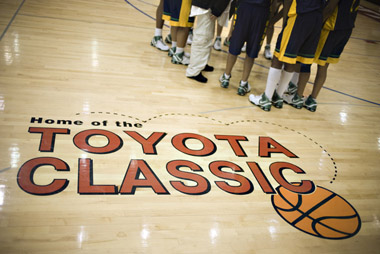
For 20 years he has painted cars. “I went to Toyota because there you get the feeling of being important.” Right now he is concerned Toyota is becoming more American. “The factory cannot find a sufficient number of inexperienced workers and this year increased the hiring of former GM and Ford people. They are jeopardizing our culture.”
Two-meter-tall Steanbeck does not drive a Toyota, however. “The cars are too small for me.”
World Auto Leader
At the end of 2006, Toyota published numbers that made General Motors cringe. In 2007, the Japanese company will build 9.42 million cars, an increase of 4%. This year, Toyota will open factories in China, Russia and Thailand. In addition, they are also adding a new USA plant. It will be built in Blue Spring, Mississippi. This is the second symbolically significant shock for the Americans: only a stone’s throw away lies Tupelo, the birthplace of US icon Elvis Presley. As Seichi Sudo, Toyota’s USA president, made the announcement of the new plant location a little over a week ago, he donned a pair of Elvis Presley glasses and stick-on sideburns. Elvis announced the plant would open in 2010 and that 150, 000 cars would roll off the assembly line each year.
General Motors, who for 76 years was #1, however has closed factories and let people go. The analysts do not expect that GM will build more in 2007 than they did last year (around 9.18 million). “It will be a sad day when Toyota surpasses us,” said GM president, Rich Wagoner, recently. “We will fight to stay #1.” Toyota sounds off differently. “We are not concentrating on being #1,” said spokesperson Victor Vanov, “We want to be the best.” A principle that has paid off. In the last financial year, Toyota achieved over $12 billion in profit and GM recorded a loss of over 16 billion.

the ideal i have for GM is a self power genrenter the ideal will help